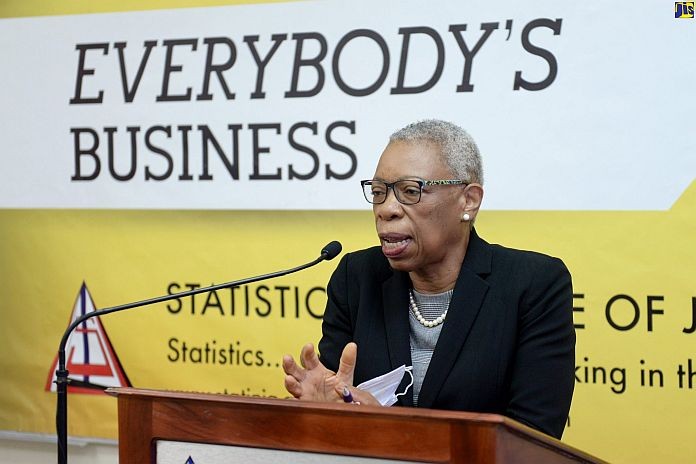Unemployment down, says Statistical Institute of Jamaica

By Douglas McIntosh
KINGSTON, Jamaica, (JIS) – The Statistical Institute of Jamaica (STATIN) is reporting that the unemployment rate for July 2021 was 8.5 percent; this is 4.1 percentage points lower than the 12.6 per cent out-turn for the corresponding period last year, according to STATIN’s Labour Force Survey for the month.
Director-General, Carol Coy, says data from the survey show that the number of unemployed persons went down by 49,200 or 30.4 percent to 112,500. “The number of unemployed males fell by 43.4 percent. In comparison, the number of unemployed females declined by 17.5 percent,” she informed.
Coy further indicated that the unemployment rate for youth, aged 14 to 24, was 23.9 percent, 6.4 percentage points lower than the July 2020 out-turn of 30.3 percent. The director-general advised that the rate for male youth was 18.4 percent and 30.8 percent for females; speaking during STATIN’s quarterly digital briefing on Wednesday, October 20.
Coy said the employed labour force, correspondingly, increased by 93,400 persons or 8.3 percent to 1,215,000 and indicated that the number of employed males rose by 55,700 or 9 percent to 677,500 persons, while there were 537,500 employed females, an increase of 37,700 or 7.5 percent.
Meanwhile, the ‘construction’ and “real estate and other business services’ industry groups accounted for more than 50 percent of the increase in the employed labour force.
Coy told journalists that 118,300 persons were employed in the construction industry, representing an increase of 26,100 or 28.3 percent, with males accounting for 25,900 of this figure.
“For the real estate and other business services industry, there were 115,100 persons employed, an increase of 23 percent. Females accounted for the largest increase – 11,900 or 25.4 percent,” she added. Other industry groups recording notable increases were ‘accommodation and food service activities’ – up 17,800 persons; ‘agriculture, forestry and fishing’ – up 6,200 persons; and ‘wholesale and retail trade, repair of motor vehicles and motorcycles’ – up 5,500 persons.
Data on the employed labour force by occupation groups show that the categories ‘elementary occupation’ and ‘service workers and shop and market sales workers’ accounted for more than 50 percent of the increase recorded.
Coy informed that the number of persons employed in elementary occupation totalled 155,700, an increase of 25,900 or 19.3 percent. This group includes cleaners and helpers; labourers in agriculture, forestry and fishing, mining, construction, manufacturing, and transport; food preparation assistants; and street and related sales and service workers, such as persons distributing flyers, and newspaper vendors.
The service workers and shop and market sales workers group increased by 24,200 persons or 9.9 percent, moving to 269,300.
Other occupation groups recording significant increases were ‘clerks’, up 18,300 persons; ‘professionals, senior officials and technicians’, up 10,400 persons; and ‘craft and related trade workers’, up 2,900 persons.
Coy advised that the overall size of the labour force increased by 44,200 persons, or 3.4 percent, to 1,327,500. The number of males rose by 20,700 or 2.9 percent to 723,200, while the female labour force climbed by 23,500 or 4 percent to 604,300.
There was a 5.2 percent decline in the number of individuals outside the labour force to 767,500. This was 41,800 fewer than the corresponding period in July 2020. The total number of males fell 19,500, or 6 percent, to 305,100, while the female complement declined by 22,300, or 4.6 percent, to 462,400.
Source: caribbeannewsglobal.com



